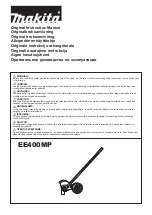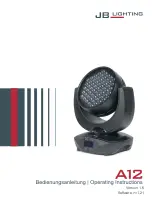
Keysight N4917CPCA Optical Receiver Stress Test for CPRI Fronthaul Networks User Guide
9
Overview
1
The electrical signal generated from the BERT is fed into an 81490/91A
electrical-optical converter to modulate the laser and create a stressed
optical signal.
Depending on which standard is being tested, either an 8160xA tunable
laser or the internal 8149xA laser can be used. The optical output of the
8149xA is attenuated to achieve the required optical power level at the
input of the receiver under test.
Prior to testing the receiver, the optical signal for each wavelength is
calibrated using an N1092x DCA-M Sampling Oscilloscope or an
86100D/N1000A DCA-X Wide-Bandwidth Oscilloscope with an 86105D
optical module set up as a reference receiver.
The equipment used in the Optical Stressed Eye Test Setup is under
control of the N4917CPCA Test Solution software, which takes care of the
various equipment settings and performs an iterative adjustment of the
BERT stresses until the optical signal measured on the DCA meets the
required stressed eye parameters.
The N4917CPCA Optical Receiver Stress Test Solution software also
allows for precise repeatable calibration of an optical stressed eye. The
N4917CPCA Optical Receiver Stress Test solution enables an additional
stress source, bounded uncorrelated jitter (BUJ) to be used as an
alternative to sinusoidal jitter or random jitter when calibrating the
stressed eye. BUJ can provide a better model for crosstalk in CPRI
fronthaul network testing. A simple switch in the software GUI enables the
user to choose between BUJ and PJ2 (sinusoidal jitter) for 40/100GBASE
standards, or BUJ and RJ (random jitter) for the 10GBASE standard.
Additionally CPRI fronthaul networks generally run at slightly different line
rates, e.g. CPRI option 10 bit rate is 24.33024 Gb/s instead of 25.78125
Gb/s. The N4917CPCA lets the user adjust the bit rate prior to a stressed
eye calibration.
Once you achieve the calibrated stressed eye, proceed to test an actual
device (DUT). In fronthaul testing priority is placed on the impact of jitter
on the recovered clock frequency, which is usually measured with an
oscilloscope. Consequently, DUT BER measurements at the receiver are
not common. However if required, the N4917CPCA does provide
semi-automated Jitter Tolerance measurements routines or you can
perform the equivalent fully automated measurement on a Bit Error Rate
Tester (BERT).
Содержание N4917CPCA
Страница 1: ...User Guide Keysight N4917CPCA Optical Receiver Stress Test for CPRI Fronthaul Networks...
Страница 10: ...10 Keysight N4917CPCA Optical Receiver Stress Test for CPRI Fronthaul Networks User Guide 1 Overview...
Страница 82: ...82 Keysight N4917CPCA Optical Receiver Stress Test for CPRI Fronthaul Networks User Guide Index...
Страница 83: ...Keysight N4917CPCA Optical Receiver Stress Test for CPRI Fronthaul Networks User Guide 83...










































